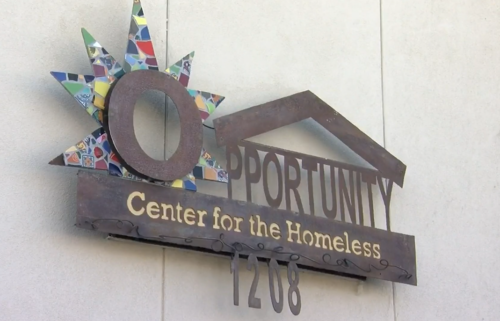What El Paso CBP officials say you need to know about Monday’s border reopening
EL PASO, Texas -- U.S. Customs and Border Protection held a briefing Friday to discuss the Texas-Mexico border reopening on Monday for non-essential travelers for the first time since March 2020.
CBP leadership addressed border crossing requirements and how the change will be implemented locally. They warned to expect longer wait times to cross.
“We do anticipate more travelers... Everybody should expect longer wait times. That’s the reality of what we’re going to see,” said Ray Provencio, acting El Paso Port Director. “We will be monitoring traffic and adjusting some staffing to meet the anticipated added demand. We are predicting longer wait times, and are asking for travelers to help us speed the process as much as possible by being prepared for the process.”
CBP officials suggested the following steps that travelers can take to try and help speed up processing for entry into the U.S. from Mexico:
- If you are a visa holder traveling for non-essential reasons, you can verbally attest or declare to the officer that you have been vaccinated, without waiting for the officer to ask the question. Have your proof of vaccination ready, in case the officer asks to see it. (Not every individual will be asked to show their proof at every crossing, but they are required to have their proof of vaccination with them in case they are asked to provide it to the CBP officer as a part of their inspection for entry into the U.S.)
- If you are traveling for non-essential reasons, travel at off-peak times. At local ports of entry, our peak times with the highest traffic volumes are on Sundays and weekday mornings To help alleviate bottlenecks, CBP is recommending that those who can, decide when to cross choose off-peak hours for their travel times.
- For travelers in need of an I-94 permit or permiso, use the CBP One mobile app to apply and pay in advance of your crossing, up to seven days before you cross. Travelers can use the app on their phone to complete the application, receive conditional approval, and pay the fee for the permit. They can then complete the final step with the officer in the primary booth during their inspection for entry to the U.S. Using the app significantly improves the individual traveler’s crossing experience, as they do not need to go to secondary inspection for completion and can instead continue on their way. And using the app helps save time for everyone at the border crossing. For travelers who do not apply electronically, they should expect long wait times for processing.
- Use the correct lane. Traffic at our local ports of entry is segmented into three different lanes. The SENTRI lanes are only for those traveling in a vehicle with all of the occupants registered in the low-risk Trusted Traveler program; the vehicle itself must also be registered with SENTRI. The Ready lanes are only for those who have a document equipped to use the Radio Frequency Identification (RFID) technology available to help speed processing into the U.S. For U.S. citizens, that’s a passport card, rather than the blue passport book. It also includes Legal Permanent Resident Cards and the Border Crossing Cards held by local B1/B2 visa holders. All others must have their correct documentation ready to show that they have the legal status to enter the U.S., and use the general traffic lanes.
The Texas-Mexico border was closed for 20 months to slow the spread of the Covid-19 pandemic, but now with the abundance of vaccine and a reduction of positive cases, the White House moved away from the restrictions.
However, officials said those crossing the border must adhere to the following requirements when crossing the border into the U.S. at all ports of entry:
- present proof of Covid-19 vaccination as outlined by CDC; and,
- verbally attest to their non-essential travel and vaccination status.
The Centers for Disease Control has determined that for purposes of travel to the U.S., vaccines accepted will include current Federal Drug Administrartion approved or authorized vaccines and World Health Organization (WHO) emergency use listed vaccines. To date, there are currently seven vaccines that meet the CDC’s requirements, including:
- Pfizer-BioNTech
- Moderna
- Johnson and Johnson
- Oxford–AstraZeneca
- Sinopharm BIBP
- Sinovac
- Covishield
Officials also noted that to be considered fully vaccinated, 14 days must have passed since your final shot for your vaccine.



